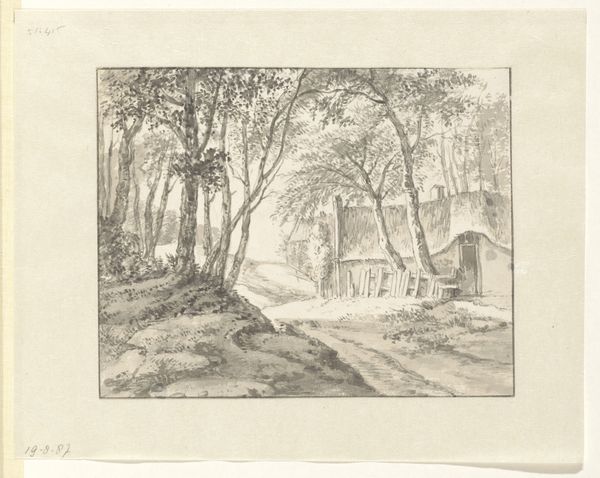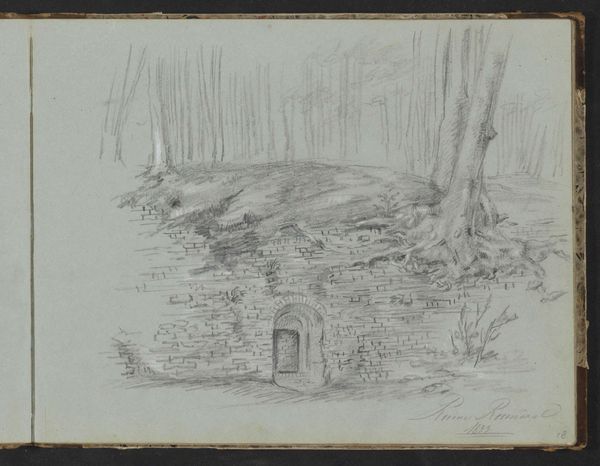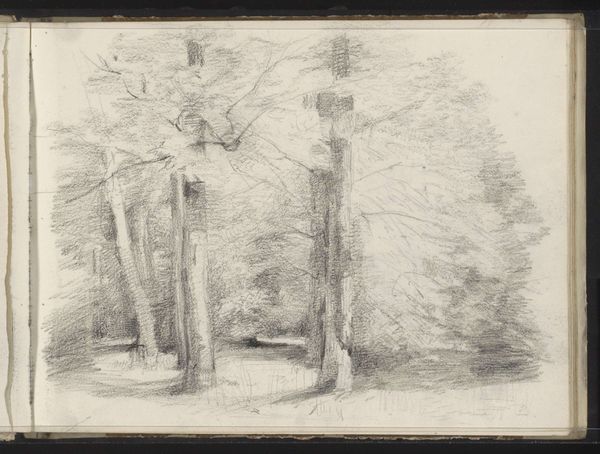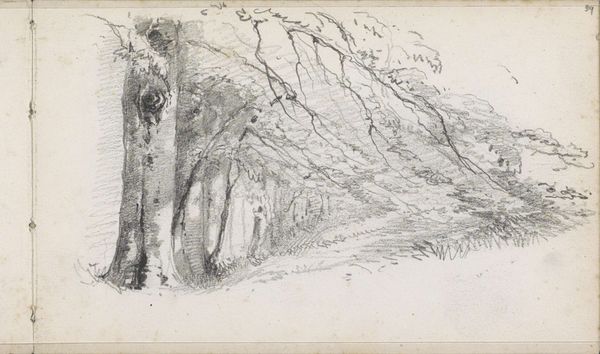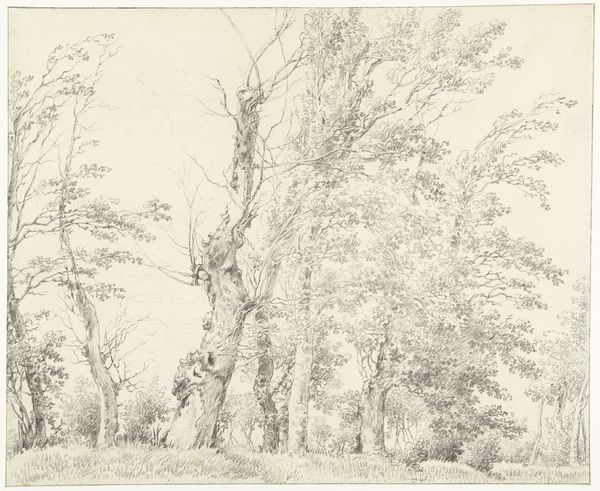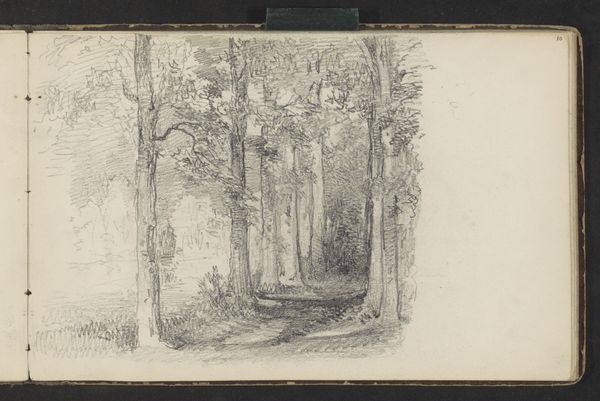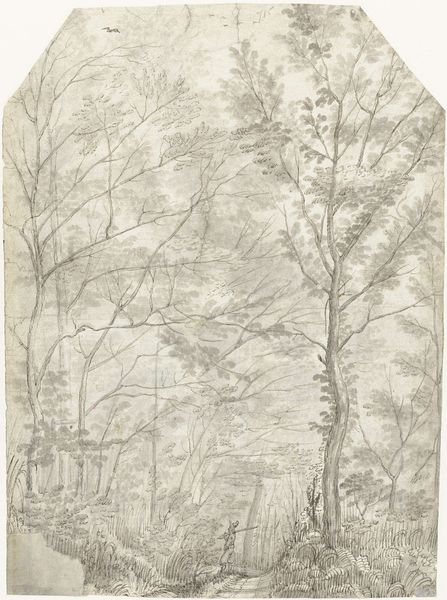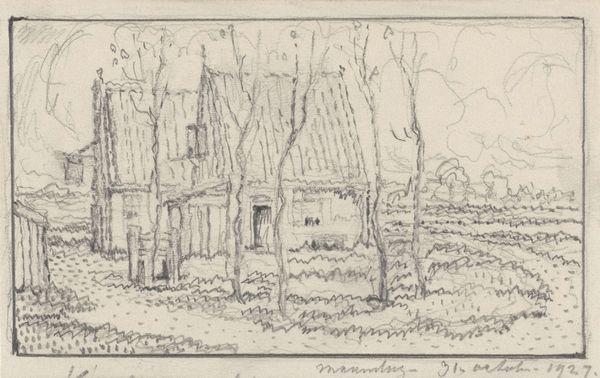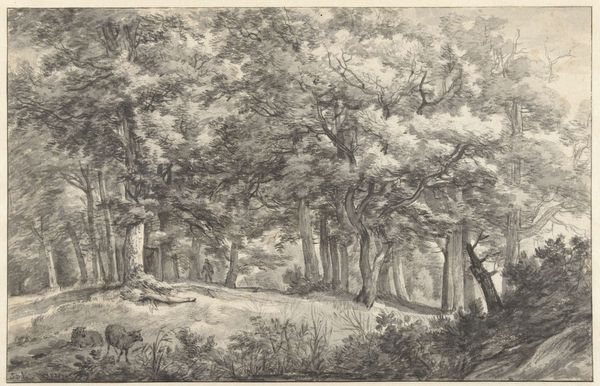
drawing, pencil
#
drawing
#
amateur sketch
#
light pencil work
#
dutch-golden-age
#
pen sketch
#
pencil sketch
#
landscape
#
personal sketchbook
#
pen-ink sketch
#
pencil
#
pen work
#
sketchbook drawing
#
pencil work
#
sketchbook art
Dimensions: height 271 mm, width 443 mm
Copyright: Rijks Museum: Open Domain
Roelant Roghman rendered this drawing of Alkemade, or Oud-Poelgeest, with pen and brown ink, a vision of desolation. The ruin stands starkly among the trees, a silent testament to time's relentless march, embodying Vanitas. The ruin motif, prominent since antiquity, appears again and again. Consider Piranesi's etchings of Roman ruins, which evoke a sense of grandeur but also underscore human impermanence. These crumbling structures elicit a contemplation of mortality, acting as a psychoanalytic trigger, stirring deep-seated anxieties about decay and oblivion. The trees, framing the ruin, add another layer to this symbolic landscape. Trees have been viewed as symbols of life, growth, and resilience, yet here they serve to highlight the ruin's decay. The image stirs a complex emotional response, engaging us on a subconscious level. The cyclical progression of ruins reminds us of the ebb and flow of civilizations. This motif resurfaces throughout art history, constantly evolving, prompting us to reflect on the transient nature of existence.
Comments
No comments
Be the first to comment and join the conversation on the ultimate creative platform.
